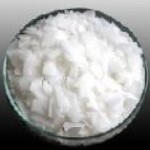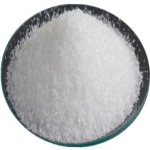Calcium Glycerophosphate BP Ph Eur USP FCC Food Grade & Calcium Gluconate BP Ph Eur USP IP FCC Food Grade Suppliers Exporters, Manufacturers
Calcium Glycerophosphate
CAS Number: 27214-00-2 BP Ph Eur USP FCC Food Grade Suppliers Exporters, Manufacturers

Please visit Safety Data Sheet of Calcium Glycerophosphate BP Ph Eur USP FCC Food Grade Manufacturers.
Specifications of Calcium Glycerophosphate BP Ph Eur Grade
Ph Eur
C3H7CaO6P -- 210.1 -- CAS 27214-00-2
Action and use: Excipient.
DEFINITION
Mixture in variable proportions of the calcium salt of 2,3-dihydroxypropyl phosphate and of 2-hydroxy-1-(hydroxymethyl)ethyl phosphate which may be hydrated.
Content: 18.6 per cent to 19.4 per cent of Ca (dried substance).
CHARACTERS
Appearance: White or almost white powder, hygroscopic.
Solubility: Sparingly soluble in water, practically insoluble in ethanol (96 per cent).
IDENTIFICATION
A. Mix 1 g with 1 g of potassium hydrogen sulphate in a test tube fitted with a glass tube.Heat strongly and direct the white vapour towards a piece of filter paper impregnated with a freshly prepared 10 g/l solution of sodium nitroprusside. The filter paper develops a blue colour in contact with piperidine.
B. Ignite 0.1 g in a crucible. Take up the residue with 5 ml of nitric acid and heat on a water-bath for 1 min. Filter. The filtrate gives reaction of phosphates.
C. It gives reaction of calcium.
TESTS
Solution S: Dissolve 1.5 g at room temperature in carbon dioxide-free water prepared from distilled water and dilute to 150 ml with the same solvent.
Appearance of solution: Solution S is not more opalescent than reference suspension.
Acidity or alkalinity: To 100 ml of solution S add 0.1 ml of phph solution. Not more than 1.5 ml of 0.1 M hydrochloric acid or 0.5 ml of 0.1 M sodium hydroxide is required to change the colour of the indicator.
Citric acid: Shake 5.0 g with 20 ml of carbon dioxide-free water and filter. To the filtrate add 0.15 ml of sulphuric acid and filter again. To the filtrate add 5 ml of mercuric sulphate solution and heat to boiling. Add 0.5 ml of a 3.2 g/l solution of potassium permanganate and again heat to boiling. No precipitate is formed.
Glycerol and ethanol (96 per cent)-soluble substances: Maximum 0.5 per cent. Shake 1.000 g with 25 ml of ethanol (96 per cent) for 1 min. Filter. Evaporate the filtrate on a water-bath and dry the residue at 70C for 1 h. The residue weighs a maximum of 5 mg.
Chlorides: Maximum 500 ppm.
Phosphates: Maximum 400 ppm.
Sulphates: Maximum 0.1 per cent, determined on solution S.
Arsenic: Maximum 3 ppm.
Iron: Maximum 50 ppm, determined on 0.20 g.
Heavy metals: Maximum 20 ppm.
Loss on drying: Maximum 12.0 per cent, determined on 1.000 g by drying in an oven at 150C for 4 h.
Specifications of Calcium Glycerophosphate USP Dietary Supplement Grade:
C3H7CaO6P --- 210.14
1,2,3-Propanetriol, mono(dihydrogen phosphate) calcium salt (1:1);
Calcium glycerophosphate CAS 27214-00-2.
DEFINITION
Calcium Glycerophosphate is a mixture, in variable proportions, of calcium (RS)-2,3-dihydroxypropyl phosphate and calcium 2-hydroxy-1-(hydroxymethyl)ethyl phosphate, which may be hydrated. Calcium ;Glycerophosphate contains NLT 18.6% and NMT 19.4% of calcium (Ca), calculated on the dried basis.
IDENTIFICATION
A.
Analysis: Ignite 0.1 g in a crucible. Take up the residue with 5 mL of nitric acid, heat on a water bath for 1 min, and filter. Mix 1 mL of the filtrate with 2 mL of ammonium molybdate.
Acceptance criteria: A yellow color develops.
B.
Analysis: Dissolve 20 mg of the substance being examined in 5 mL of 5 M acetic acid and add 0.5 mL of potassium ferrocyanide solution (53 mg/mL). The resulting solution remains clear. To the clear solution, add 50 mg of ammonium chloride.
Acceptance criteria: A white crystalline precipitate is produced.
Iron: To pass the test.
Acceptance criteria: NMT 20 ppm.
Limit of Chloride: To pass the test.
Acceptance criteria: NMT 0.04%
Limit of Sulfate: To pass the test.
Acceptance criteria: NMT 0.2%
Limit of Arsenic: To pass the test.
Acceptance criteria: NMT 3 ppm.
Limit of Phosphates:
Acceptance criteria: NMT 0.04%
Citric Acid: To pass the test.
Glycerol and Alcohol-soluble Substances: To pass the test.
Appearance of Solution: To pass the test.
Acidity or Alkalinity: To pass the test.
Loss on Drying Dry a sample at 150C for 4 h: it loses NMT 12.0% of its weight.
Specifications of Calcium Glycerophosphate FCC Food Grade
C3H7CaO6P Formula wt 210.14
CAS: 27214-00-2
DESCRIPTION
Calcium Glycerophosphate occurs as a fine, white powder. It is somewhat hygroscopic. One gram dissolves in about 50 mL of water at 25C. It is more soluble in water at a lower temperature, and citric acid increases its solubility in water. It is insoluble in alcohol.
Function: Nutrient.
REQUIREMENTS
Identification: A saturated sample solution gives positive tests for Calcium.
Assay: Not less than 98.0% and not more than 100.5% of C3H7CaO6P, after drying.
Alkalinity: Passes test.
Lead: Not more than 4 mg/kg.
Loss on Drying: Not more than 12.0%.

Please visit Hazard Statement of Calcium Glycerophosphate BP Ph Eur USP FCC Food Grade Suppliers.
Calcium Gluconate
CAS Number: 299-28-5 or 18016-24-5 BP Ph Eur USP IP FCC Food Grade Suppliers Exporters, Manufacturers

Please visit Safety Data Sheet of Calcium Gluconate BP Ph Eur USP IP FCC Food Grade Manufacturers.
Specifications of Calcium Gluconate BP Grade Ph Eur Grade
C12H22CaO14-H2O --- 448.4 --- CAS 18016-24-5
DEFINITION
Calcium D-gluconate monohydrate.
Content: 98.5 per cent to 102.0 per cent of C12H22CaO14,H2O.
CHARACTERS
Appearance: White or almost white, crystalline or granular powder.
Solubility: Sparingly soluble in water, freely soluble in boiling water.
IDENTIFICATION
A. Thin-layer chromatography.
B. Solution S (see Tests) gives the reactions of calcium.
TESTS
Solution S: Dissolve 1.0 g in water R heated to 60C and dilute to 50 ml with the same solvent.
Appearance of solution: At 60C, solution S is not more intensely coloured than reference solution. After cooling, it is not more opalescent than reference suspension.
Organic impurities and boric acid: To pass the test.
Sucrose and reducing sugars: To pass the test.
Chlorides: Maximum 200 ppm.
Sulphates: Maximum 100 ppm.
Magnesium and alkali metals: Maximum 0.4 per cent.
Heavy metals: Maximum 10 ppm.
Microbial contamination: Total viable aerobic count not more than 103 micro-organisms per gram, determined by plate count.
Specifications of Calcium Gluconate USP Grade
C12H22CaO14 (anhydrous) 430.37
D-Gluconic acid, calcium salt (2:1).
Calcium D-gluconate (1:2) [CAS 299-28-5].
Monohydrate 448.39
Calcium Gluconate is anhydrous or contains one molecule of water of hydration. The anhydrous form contains not less than 98.0 percent and not more than 102.0 percent of C12H22CaO14, calculated on the dried basis. The monohydrate form contains not less than 99.0 percent and not more than 101.0 percent of C12H22CaO14H2O where labeled as intended for use in preparing injectable dosage forms, and not less than 98.5 percent and not more than 102.0 percent of C12H22CaO14H2O where not intended for use in preparing injectable dosage forms.
Identification:
A: A solution (1 in 50) responds to the test for Calcium.
B: Chromatographic plate test.
Loss on drying: Dry it at 105 for 16 hours: the anhydrous form loses not more than 3.0% of its weight; the monohydrate form, where labeled as intended for use in preparing injectable dosage forms, loses not more than 1.0% of its weight, and where not intended for use in preparing injectable dosage forms loses not more than 2.0% of its weight.
Chloride: A 1.0-g portion shows no more chloride than corresponds to 0.07 mL of 0.020 N hydrochloric acid (0.005%). Where it is not intended for use in the preparation of injectable dosage forms, a 1.0-g portion shows no more chloride than corresponds to 1 mL of 0.020 N hydrochloric acid (0.07%).
Limit of oxalate: Calcium Gluconate not intended for use in the preparation of injectable dosage forms is exempt from this requirement. For details please see the original monograph.
Limit of phosphate: To pass the test.
Sulfate: To pass the test.
Arsenic: The limit is 3 ppm.
Heavy metals: 0.001%. [Where Calcium Gluconate not intended for use in the preparation of injectable dosage forms, the limit is 0.002%.]
Limit of magnesium and alkali metals: (0.4%). [NOTE: Calcium Gluconate not intended for use in preparing injectable dosage forms is exempt from this requirement.]
Limit of iron: The limit is 5 ppm. [NOTE: Calcium Gluconate labeled as not intended for use in the preparation of injectable dosage forms is exempt from this requirement.]
Reducing substances: the limit is 1.0%.
Specifications of Calcium Gluconate IP Grade
IP Grade is also offered.
Specifications of Calcium Gluconate FCC Food Grade
CH2OH(CHOH)4COO 2Ca
C12H22CaO14 Formula wt, anhydrous 430.38
C12H22CaO14-H2O Formula wt, monohydrate 448.39
CAS: anhydrous 299-28-5
INS: 578
DESCRIPTION
Calcium Gluconate occurs as white, crystalline granules or powder. It is anhydrous or contains one molecule of water of hydration. It is stable in air. One gram dissolves slowly in about 30 mL of water at 25C and in about 5 mL of boiling water. It is insoluble in alcohol and in many other organic solvents. Its solutions are neutral to litmus.
Function: Firming agent; stabilizer; texturizer.
REQUIREMENTS
Identification:
A. A 1:50 aqueous solution gives positive tests for Calcium.
B. Chromatographic test.
Assay: Anhydrous: Not less than 98.0% and not more than 102.0% of C12H22CaO14, calculated on the dried basis; Monohydrate: Not less than 98.0% and not more than 102.0% of
C12H22CaO14-H2O, calculated on the as-is basis.
Lead: Not more than 2 mg/kg.
Loss on Drying: Anhydrous: Not more than 3.0%; Monohydrate: Not more than 2.0%.
Sucrose and Reducing Sugars: Not more than 1.0%.

Please visit Hazard Statement of Calcium Gluconate BP Ph Eur USP IP FCC Food Grade Suppliers.
Calcium Glycerophosphate CAS Number 27214-00-2 & Calcium Gluconate CAS Number 299-28-5 or 18016-24-5 Supplier Exporter, Manufacturer:
Annie Chemie P Ltd
Mumbai 4000010, INDIA
With Agents and offices in UAE, USA, Europe.
e-mail: info@anniechemie.com
Copyright and Usual Disclaimer is Applicable.
May 30, 2025
Exporters to USA, Canada, UK, Europe, UAE, Nigeria, Algeria, Turkey, Mexico, Brazil, Chile, Argentina, Australia, Dubai etc.
Perfection is made up of small things and that is a big thing.
